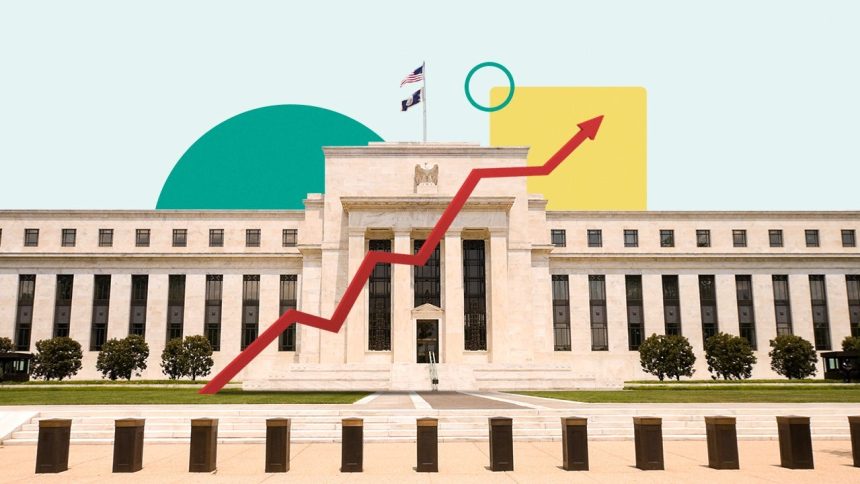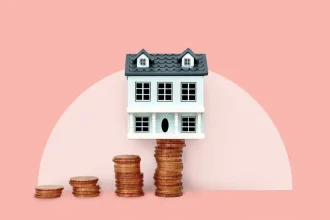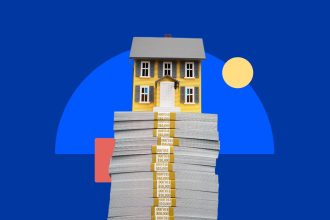For the fifth meeting in a row, the Federal Reserve announced today that it will again leave its benchmark interest rate unchanged. These pauses follow the three consecutive rate cuts that closed out 2024 — by half a percentage point in September and a quarter-point in both November and December — and have been a point of contention with President Trump, who has repeatedly expressed a desire to see rates cut.
What the move means for the housing market is an open question. Mortgage rates fell sharply leading up to the Fed’s first rate cut, dropping all the way from 8.01 percent in October 2023 to 6.20 percent in September 2024, according to Bankrate’s national survey of large lenders. However, mortgage rates had climbed 7 percent in January, rising even after the Fed’s end-of-year rate cuts.
The disconnect served as a reminder that the Fed doesn’t directly control mortgage rates, although it certainly affects them. “A Fed on hold aligns with our forecast for little change in mortgage rates for the time being,” said Mike Fratantoni, chief economist at the Mortgage Bankers Association.
The Federal Reserve and the housing market
As inflation spiked in 2022, the Fed enacted increases of as much as three-quarters of a point. Now that inflation is significantly down from its peak, that round of tightening is over.
The Fed’s rate hikes slowed the housing market. Home sales dropped sharply — but home prices hit record levels, and continue to do so. Because home values are not driven solely by interest rates but by a complicated mix of factors, it’s hard to predict exactly how the Fed’s efforts will affect the housing market.
Higher rates are challenging for both homebuyers, who have to cope with steeper monthly payments, and sellers, who see less demand and lower offers for their homes. Mortgage rates could move down even before the Fed cuts rates, said Lisa Sturtevant, chief economist at Bright MLS, a listing service in the mid-Atlantic region.
“A decline in mortgage rates later this summer could give a jolt to the housing market, bringing buyers off the sidelines to take advantage of the dip in rates and expanded inventory,” she says.
How the Fed affects mortgage rates
The Federal Reserve does not set mortgage rates, and the central bank’s decisions don’t move mortgages as directly as they do other products, such as savings accounts and CD rates. Instead, mortgage rates tend to move in lockstep with 10-year Treasury yields.
“Despite interest rate cuts amounting to a full percentage point by the Federal Reserve in the latter part of 2024, mortgage rates bounded higher,” says Greg McBride, Bankrate’s chief financial analyst. “Yields on 10-year Treasury notes, and ultimately mortgage rates, were on the rise due to stubborn and elevated inflation, faster than expected economic growth and worries about escalating government borrowing. If mortgage rates are going to come down in any meaningful way, inflation needs to resume the downward march to 2 percent.”
If mortgage rates are going to come down in any meaningful way, inflation needs to resume the downward march to 2 percent.
— Greg McBride, CFA, chief financial analyst for Bankrate
Still, the Fed’s policies do set the overall tone for mortgage rates. Lenders and investors closely watch the central bank, and the mortgage market’s attempts to interpret the Fed’s actions affect how much you pay for your home loan. The Fed bumped rates seven times in 2022, a year that saw mortgage rates jump from 3.4 percent in January all the way to 7.12 percent in October. In 2023, mortgage rates went higher still, briefly touching 8 percent. As of July 30, 2025, the 30-year rate averaged 6.75 percent.
What happens to the housing market when interest rates rise?
There’s no doubt that record-low mortgage rates helped fuel the housing boom of 2020 and 2021. Some think it was the single most important factor in pushing the residential real estate market into overdrive.
When mortgage rates surged higher than they had been in two decades, the housing market slowed dramatically. And, while sales volume remains slow, prices are higher than they’ve ever been. The nationwide median existing-home price for June 2025 was $435,300, according to the National Association of Realtors — a new record for the highest median price NAR has ever recorded.
In the long term, home prices and sales tend to be resilient to rising mortgage rates, housing economists say. That’s because individual life events that prompt a home purchase — the birth of a child, marriage, a job change — don’t always correspond conveniently with mortgage rate cycles.
History bears this out. In the 1980s, mortgage rates soared as high as 18 percent, yet Americans still bought homes. In the 1990s, rates of 8 to 9 percent were common, and Americans continued snapping up homes. During the housing bubble of 2004 to 2007, mortgage rates were high, yet prices soared.
So the current slowdown seems to be more of an overheated market’s return to normalcy rather than the signal of an incipient housing crash.
The combination of elevated mortgage rates and steep home-price growth over the past few years has crimped affordability. But if mortgage rates eventually pull back, affordability will become less of a factor. For instance, borrowing $320,000 at the July rate of 6.75 percent translates to a monthly principal-and-interest payment of $2,076, according to Bankrate’s mortgage calculator. Borrowing the same amount at 6 percent translates to a monthly payment of $1,919. That’s a savings of $157 per month, or more than $1,800 per year.
A continued decline in mortgage rates could create a new challenge, though: It will likely draw new buyers into the market, a surge that could further intensify the ongoing shortage of homes for sale.
Next steps for borrowers
“Prospective homebuyers should keep an eye on inflation, more so than the Fed, as a decline in inflation is a necessary precursor to Treasury yields and mortgage rates moving lower,” said McBride. Here are more pro tips for dealing with volatile mortgage rates:
- Shop around for a mortgage: Savvy shopping can help you find a better-than-average rate. With the refinance boom considerably slowed, lenders are eager for your business. “Conducting an online search can save thousands of dollars by finding lenders offering a lower rate and more competitive fees,” McBride said.
- Be cautious about ARMs: Adjustable-rate mortgages may look tempting, but McBride would advise borrowers to steer clear. “Don’t fall into the trap of using an ARM as a crutch of affordability,” he said. “There is little in the way of upfront savings, an average of just one-half percentage point for the first five years, but the risk of higher rates in future years looms large. New adjustable mortgage products are structured to change every six months rather than every 12 months, which had previously been the norm.”
- Consider a home equity loan or HELOC: While mortgage refinancing has yet to pick up steam, many homeowners are turning to home equity lines of credit (HELOCs) to tap into their home equity. The rationale is simple: If you need $50,000 for a kitchen renovation and you have a mortgage for $300,000 at 3 percent, you probably don’t want to take out a new loan at 7 percent. Better to keep the 3 percent rate on the mortgage and take a HELOC — even if it costs 10 percent.
Why we ask for feedback
Your feedback helps us improve our content and services. It takes less than a minute to
complete.
Your responses are anonymous and will only be used for improving our website.
Help us improve our content
Read the full article here














